Spatiotemporal Variations of Aerosols in China during the COVID-19 Pandemic Lockdown
Abstract
:1. Introduction
2. Methods and Materials
2.1. Retrieval of AOD from Himawari-8 Satellite Data
2.2. Spatiotemporal Prediction Principle of the E3D–LSTM Network
2.3. Overview of the Experimental Area
3. Results
3.1. Spatiotemporal Prediction Model Effect
3.2. Analysis of AOD Variation
3.3. Combining Air Pollutant Analysis
4. Discussion and Conclusions
Author Contributions
Funding
Conflicts of Interest
References
- Pastor, L.; Vorsatz, M.B. Mutual fund performance and flows during the COVID-19 crisis. Mutual Fund Perform. Flow 2020, 10, 791–833. [Google Scholar]
- Stratakis, C.A.; Laybut, D.R.; Laudet, V.; Klinge, C.M. Epidemics will always come (and go): The need to prepare for the next one, research on COVID-19, and the role of molecular and cellular endocrinology. Mol. Cell. Endocrinol. 2020, 511, 110863. [Google Scholar] [CrossRef] [PubMed]
- Wu, N.; Li, Y.; Zhao, A.; Xiao, C.; Zhou, S. Operation strategy for public transportation in Wuhan after the COVID-19 epidemic. J. Transp. Eng. Inf. 2020, 18, 64–73. [Google Scholar]
- Huo, M.; Yin, Y.; Jiang, L.; Duan, X. Survey on the mental status of inhabitants living in Wuhan, Huanggang, Kunming and Yuxi during epidemic outbreak stage of COVID-19. J. Int. Psychiatry 2020, 47, 197–200. [Google Scholar]
- Mitchell, J.F.B.; Johns, T.C.; Gregory, J.M.; Tett, S.F.B. Climate response to increasing levels of greenhouse gases and sulphate aerosols. Nature 1995, 376, 501–504. [Google Scholar] [CrossRef]
- Fan, C.; Li, Y.; Guang, J.; Li, Z.; Elnashar, A.; Allam, M.; de Leeuw, G. The impact of the control measures during the COVID-19 outbreak on air pollution in China. Remote Sens. 2020, 12, 1613. [Google Scholar] [CrossRef]
- Ren, H.; Li, A.; Xie, P.; Hu, Z.; Xu, J.; Huang, Y.; Li, X.; Zhong, H.; Zhang, H.; Tian, X.; et al. The Characterization of haze and dust processes using MAX-DOAS in Beijing, China. Remote Sens. 2021, 13, 5133. [Google Scholar] [CrossRef]
- Lim, S.S.; Vos, T.; Flaxman, A.D.; Danaei, G.; Shibuya, K.; Adair-Rohani, H.; Amann, M.; Anderson, H.R.; Andrews, K.G.; Aryee, M.; et al. A comparative risk assessment of burden of disease and injury attributable to 67 risk factors and risk factor clusters in 21 regions, 1990–2010: A systematic analysis for the Global Burden of Disease Study 2010. Lancet 2013, 380, 2224–2260. [Google Scholar] [CrossRef] [Green Version]
- Menon, S.; Hansen, J.; Nazarenko, L.; Luo, Y. Climate effects of black carbon aerosols in China and India. Science 2002, 297, 2250–2253. [Google Scholar] [CrossRef] [Green Version]
- Li, Z.; Lei, L.; Li, Y.; Chen, C.; Wang, Q.; Zhou, W.; Sun, J.; Conghui, X.; Sun, Y. Aerosol characterization in a city in central China plain and implications for emission control. J. Environ. Sci. 2021, 104, 242–252. [Google Scholar] [CrossRef]
- Zhou, M.; Jiang, J.; Langerock, B.; Dils, B.; Sha, M.; Mazière, M. Change of CO concentration due to the COVID-19 lockdown in China observed by surface and satellite observations. Remote Sens. 2021, 13, 1129. [Google Scholar] [CrossRef]
- Bhawar, R.; Fadnavis, S.; Kumar, V.; Rahul, P.; Sinha, T.; Lolli, S. Radiative Impacts of aerosols during COVID-19 lockdown period over the Indian region. Front. Environ. Sci. 2021, 9, 411. [Google Scholar] [CrossRef]
- Grzybowski, P.; Markowicz, K.; Musial, J. Reduction of air pollution in Poland in spring 2020 during the lockdown caused by the COVID-19 pandemic. Remote Sens. 2021, 13, 3784. [Google Scholar] [CrossRef]
- Muhammad, S.; Long, X.; Salman, M. COVID-19 pandemic and environmental pollution: A blessing in disguise? Sci. Total Environ. 2020, 728, 138820. [Google Scholar] [CrossRef]
- Ali, G.; Abbas, S.; Qamer, F.M.; Irteza, S.M. Environmental Spatial Heterogeneity of the Impacts of COVID-19 on the Top-20 Metropolitan Cities of Asia-Pacific. Sci. Rep. 2021, 11, 20339. [Google Scholar] [CrossRef]
- Ibrahim, S.; Landa, M.; Pešek, O.; Pavelka, K.; Halounová, L. Space-time machine learning models to analyze COVID-19 pandemic lockdown effects on aerosol optical depth over Europe. Remote Sens. 2021, 13, 3027. [Google Scholar] [CrossRef]
- Li, R.; Li, J.; Liu, Z.; Hua, J.; Wang, Y.; Wang, W. Satellite observational study on correlations among aerosol optical depth, NO2 and SO2 over China. Chin. Sci. Bull. 2016, 61, 2524–2535. [Google Scholar] [CrossRef] [Green Version]
- Huang, R.-J.; Zhang, Y.; Bozzetti, C.; Ho, K.-F.; Cao, J.-J.; Han, Y.; Daellenbach, K.R.; Slowik, J.G.; Platt, S.M.; Canonaco, F.; et al. High secondary aerosol contribution to particulate pollution during haze events in China. Nature 2014, 514, 218–222. [Google Scholar] [CrossRef] [Green Version]
- Shi, X.; Chen, Z.; Wang, H.; Yeung, D.-Y.; Wong, W.K.; Woo, W.-C. Convolutional LSTM Network: A Machine Learning Approach for Precipitation Nowcasting. In Proceedings of the NIPS 2015, Montréal, ON, Canada, 7–12 December 2015. [Google Scholar]
- Hochreiter, S.; Schmidhuber, J. Long Short-term Memory. Neural Comput. 1997, 9, 1735–1780. [Google Scholar] [CrossRef]
- Wang, Y.; Long, M.; Wang, J.; Gao, Z.; Yu, P.S. PredRNN: Recurrent neural networks for predictive learning using spatiotemporal LSTMs. In Proceedings of the Neural Information Processing Systems, Long Beach, CA, USA, 4–9 December 2017. [Google Scholar]
- Wang, Y.; Gao, Z.; Long, M.; Wang, J.; Yu, P.S. PredRNN++: Towards a resolution of the deep-in-time dilemma in spatiotemporal predictive learning. In Proceedings of the ICML2018, Stockholm, Sweden, 10–15 July 2018. [Google Scholar]
- Ji, S.; Xu, W.; Yang, M.; Yu, K. 3D convolutional neural networks for human action recognition. IEEE Trans. Pattern Anal. Mach. Intell. 2013, 35, 221–231. [Google Scholar] [CrossRef] [Green Version]
- Bhujel, N.; Teoh, E.K.; Yau, W.Y. Pedestrian trajectory prediction using RNN encoder-decoder with spatio-temporal attentions. In Proceedings of the 2019 IEEE 5th International Conference on Mechatronics System and Robots (ICMSR), Singapore, 3–5 May 2019. [Google Scholar]
- Gomes, P.; Rossi, S.; Toni, L. Spatio-temporal graph-RNN for point cloud prediction. arXiv 2021, arXiv:2102.07482. [Google Scholar]
- Wang, Y.; Lu, J.; Yang, M.-H.; Li, L.-J.; Long, M.; Li, F.-F. Eidetic 3D LSTM: A model for video prediction and beyond. In Proceedings of the ICLR 2019, New Orleans, LA, USA, 6–9 May 2019. [Google Scholar]
- Wang, Y.; Chen, L.; Li, S.; Wang, X.; Yu, C.; Si, Y.; Zhang, Z. Interference of heavy aerosol loading on the VIIRS aerosol optical depth (AOD) retrieval algorithm. Remote Sens. 2017, 9, 397. [Google Scholar] [CrossRef] [Green Version]
- Wang, Y.; Chen, L.; Xin, J.; Wang, X. Impact of the dust aerosol model on the VIIRS aerosol optical depth (AOD) product across China. Remote Sens. 2020, 12, 991. [Google Scholar] [CrossRef] [Green Version]
- Piazzola, J.; Bruch, W.; Desnues, C.; Parent, P.; Yohia, C.; Canepa, E. Influence of meteorological conditions and aerosol properties on the COVID-19 contamination of the population in coastal and continental areas in France: Study of offshore and onshore winds. Atmosphere 2021, 12, 523. [Google Scholar] [CrossRef]
- Xue, R.; Ai, B.; Lin, Y.; Pang, B.; Shang, H. Spatial and temporal distribution of aerosol optical depth and its relationship with urbanization in Shandong Province. Atmosphere 2019, 10, 110. [Google Scholar] [CrossRef] [Green Version]
- Lee, S.-J.; Jeong, Y.-C.; Yeh, S.-W. The lagged effect of anthropogenic aerosol on East Asian precipitation during the summer monsoon season. Atmosphere 2020, 11, 1356. [Google Scholar] [CrossRef]
- Abou El-Magd, I.; Zanaty, N.; Ali, E.M.; Irie, H.; Abdelkader, A.I. Investigation of aerosol climatology, optical characteristics and variability over Egypt based on satellite observations and in-situ measurements. Atmosphere 2020, 11, 714. [Google Scholar] [CrossRef]
- Bessho, K.; Date, K.; Hayashi, M.; Ikeda, A.; Yoshida, R. An introduction to Himawari-8/9—Japan’s new-generation geostationary meteorological satellites. J. Meteorol. Soc. Jpn. 2016, 94, 151–183. [Google Scholar] [CrossRef] [Green Version]
- Gupta, P.; Levy, R.C.; Mattoo, S.; Remer, L.A.; Munchak, L.A. A surface reflectance scheme for retrieving aerosol optical depth over urban surfaces in MODIS dark target retrieval algorithm. Atmos. Meas. Tech. 2016, 9, 3293–3308. [Google Scholar] [CrossRef] [Green Version]
- Zhao, L.; Xin, J.; Yang, L.; Si, R.; Liu, G. Validation analysis of Himawari-8 aerosol optical depth products. Chin. J. Atmos. Sci. 2020, 44, 455–471. [Google Scholar]
- Yang, F.; Wang, Y.; Tao, J.; Wang, Z.; Fan, M.; De Leeuw, G.; Chen, L. Preliminary investigation of a new AHI aerosol optical depth (AOD) retrieval algorithm and evaluation with multiple source AOD measurements in China. Remote Sens. 2018, 10, 748. [Google Scholar] [CrossRef] [Green Version]
- Oprea, S.; Martinez-Gonzalez, P.; Garcia-Garcia, A.; Castro-Vargas, J.A.; Orts-Escolano, S.; Garcia-Rodriguez, J.; Argyros, A. A review on deep learning techniques for video prediction. IEEE Trans. Pattern Anal. Mach. Intell. 2020, 1, 1109. [Google Scholar] [CrossRef] [PubMed]
- Geng, Y.A.; Li, Q.; Lin, T.; Jiang, L.; Zhang, Y. LightNet: A dual spatiotemporal encoder network model for lightning prediction. In Proceedings of the the 25th ACM SIGKDD International Conference, Anchorage, AK, USA, 4–8 August 2019. [Google Scholar]
- Zhang, X.; Lin, H.; Zhu, C.; Wang, J.; Li, M.; Xu, C.; Hu, M.; Meng, B.; Cao, C. Spatiotemporal characteristics and dynamic process analysis of epidemic diagnosis time of COVID-19 at early stage in Chinese mainland. Geomat. Inf. Sci. Wuhan Univ. 2020, 45, 791–797. [Google Scholar]
- Liu, Z.; Qian, J.; Du, Y.; Wang, N.; Yi, J.; Sun, Y.; Ma, T.; Pei, T.; Zhou, C. Multi-level spatial distribution estimation model of the inter-regional migrant population using multi-source spatio-temporal big data: A case study of migrants from Wuhan during the spread of COVID-19. J. Geo-Inf. Sci. 2020, 22, 147–160. [Google Scholar]
- Boersma, K.F.; Eskes, H.J.; Ee Fkind, J.P.V.; Brinksma, E.J.; Van, D.; Sneep, M.; Van, D.; Levelt, P.F.; Stammes, P.; Gleason, J.F. Near-real time retrieval of tropospheric NO2 from OMI. Atmos. Chem. Phys. 2012, 6, 2103–2118. [Google Scholar]
- Russell, A.R.; Valin, L.C.; Cohen, R.C. Trends in OMI NO2 observations over the United States: Effects of emission control technology and the economic recession. Atmos. Chem. Phys. 2012, 12, 12197–12209. [Google Scholar] [CrossRef] [Green Version]
- Rao, Y.; Yang, J. Analysis on spatial and temporal evolution of industrial land under industry classification in Wuhan City. Resour. Environ. Yangtze Basin 2020, 29, 1525–1534. [Google Scholar]
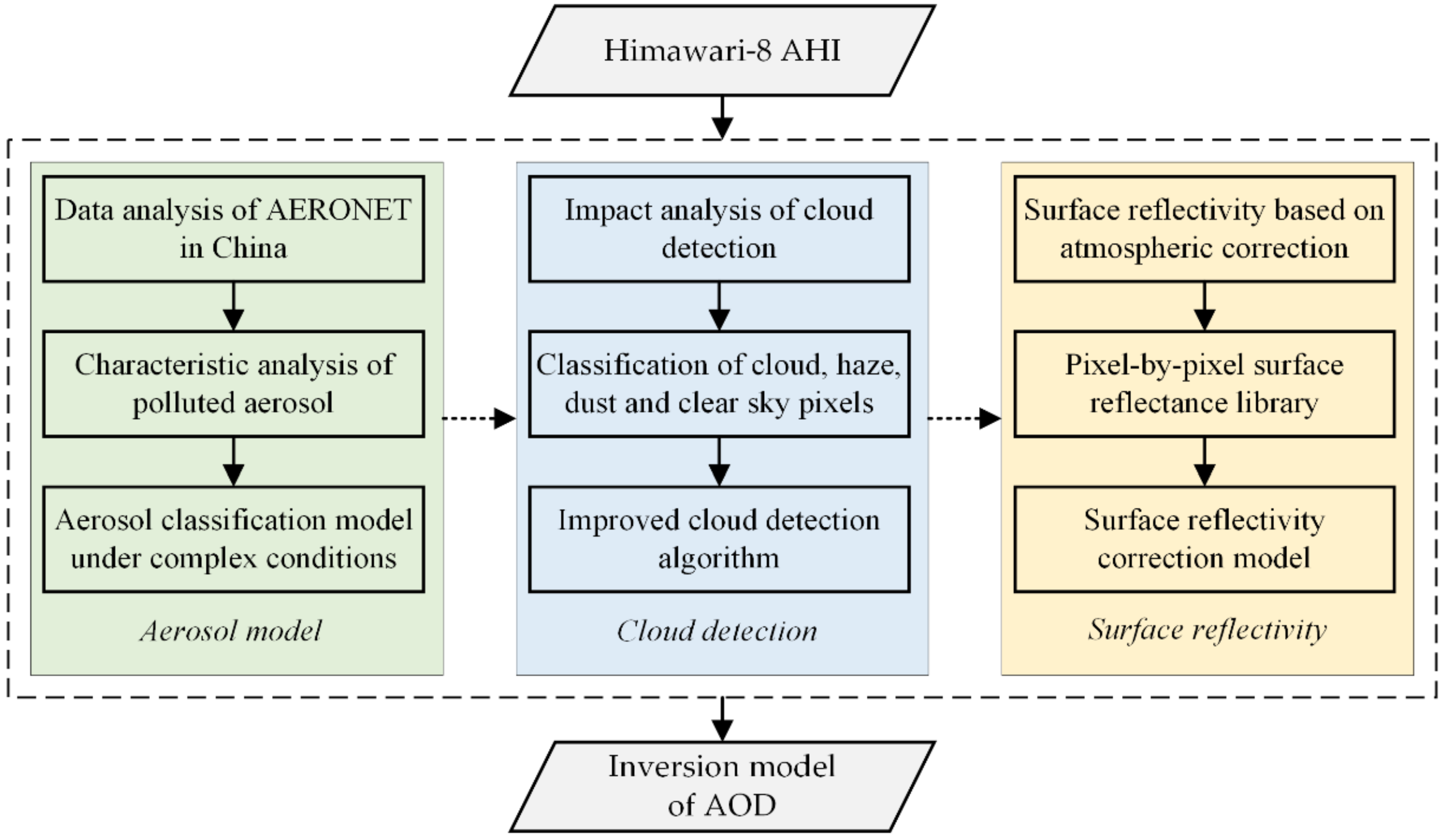

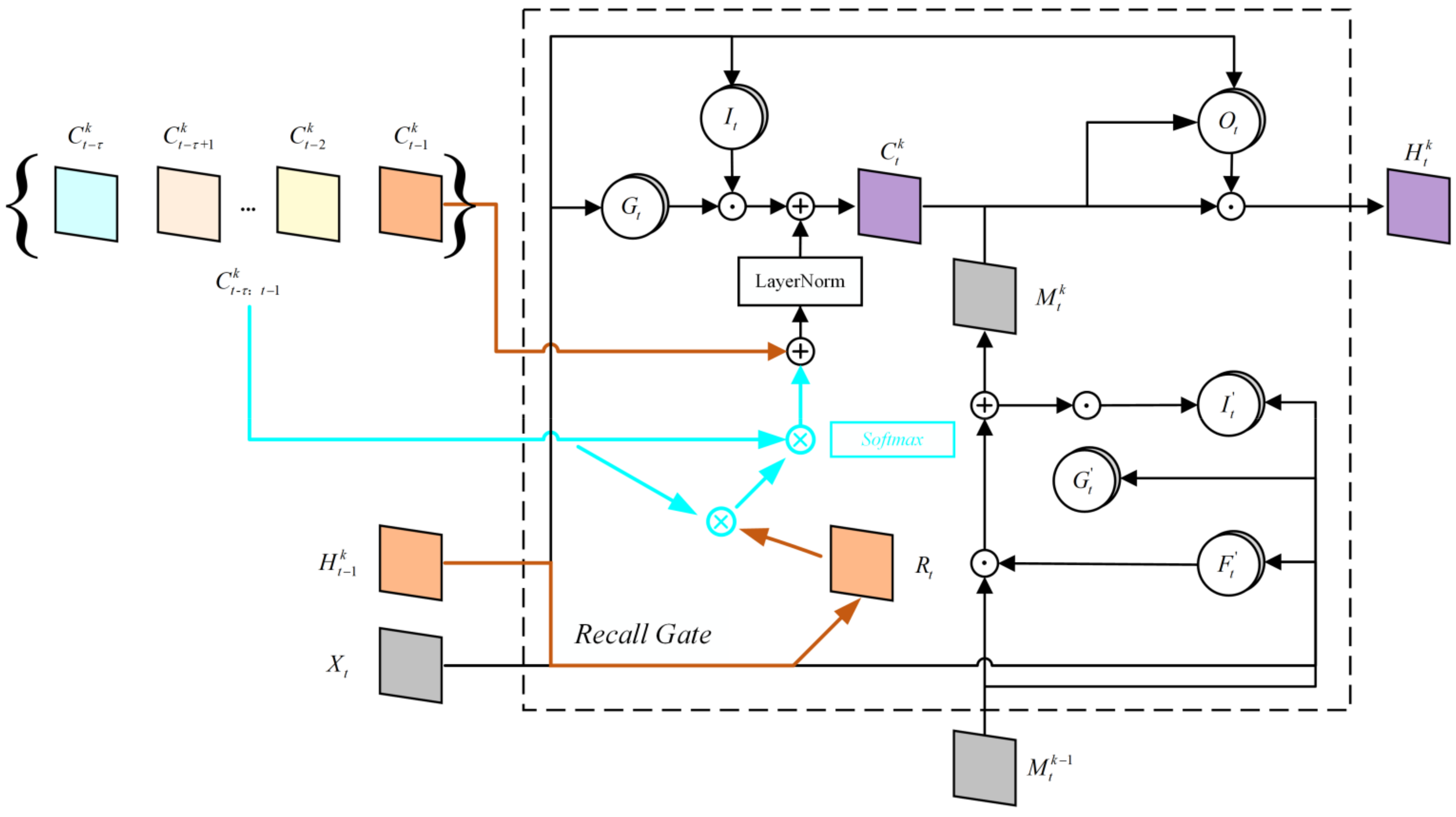
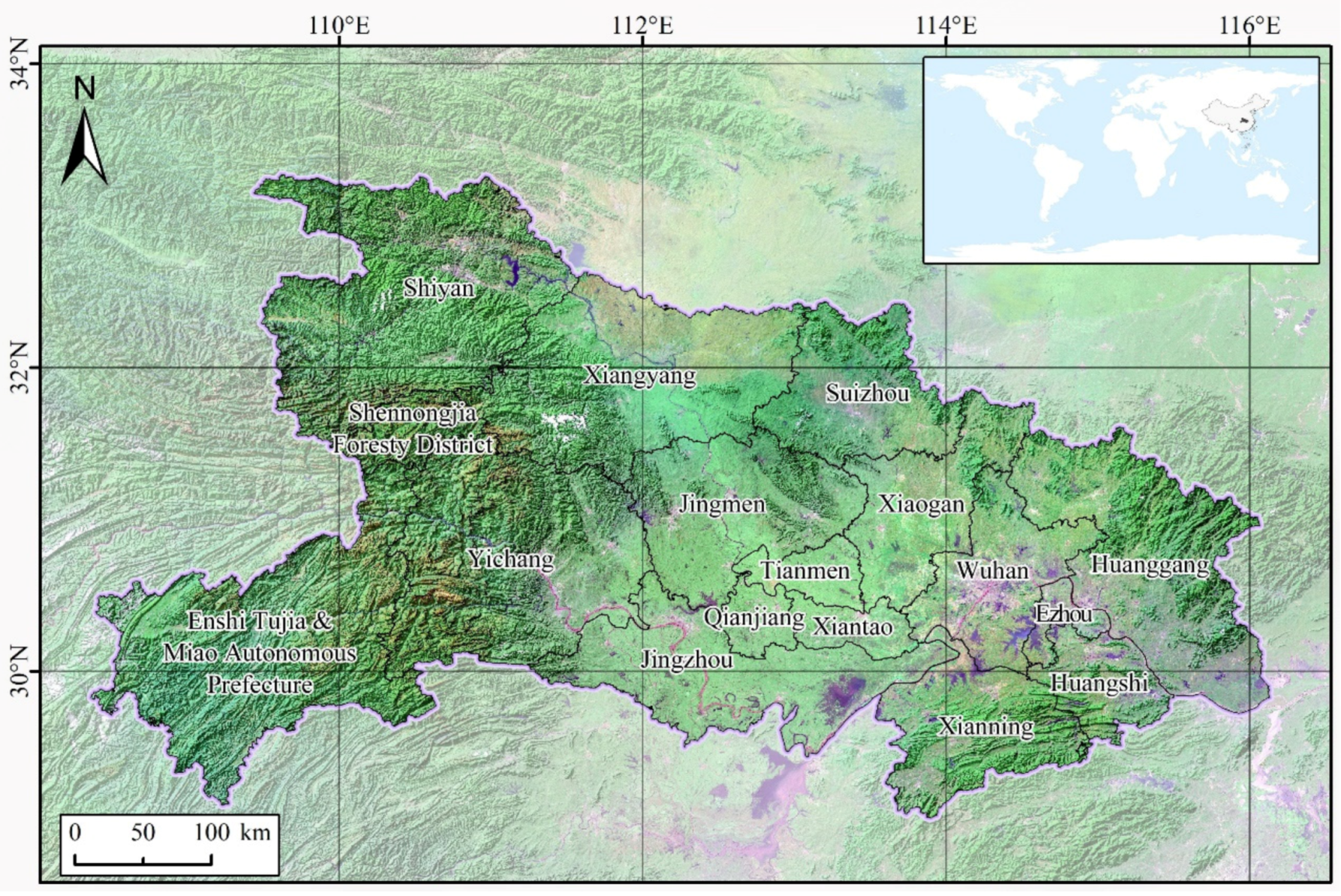
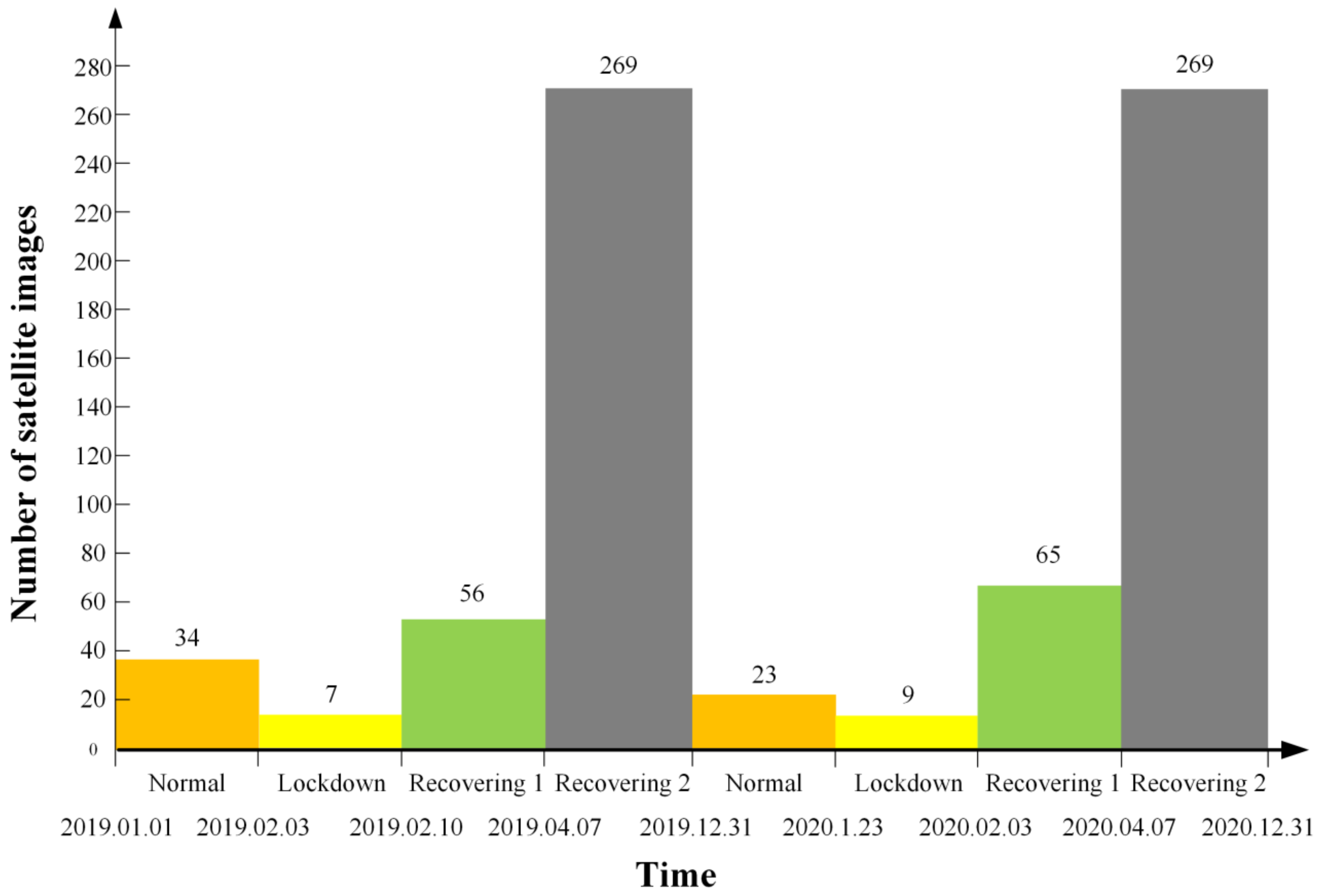
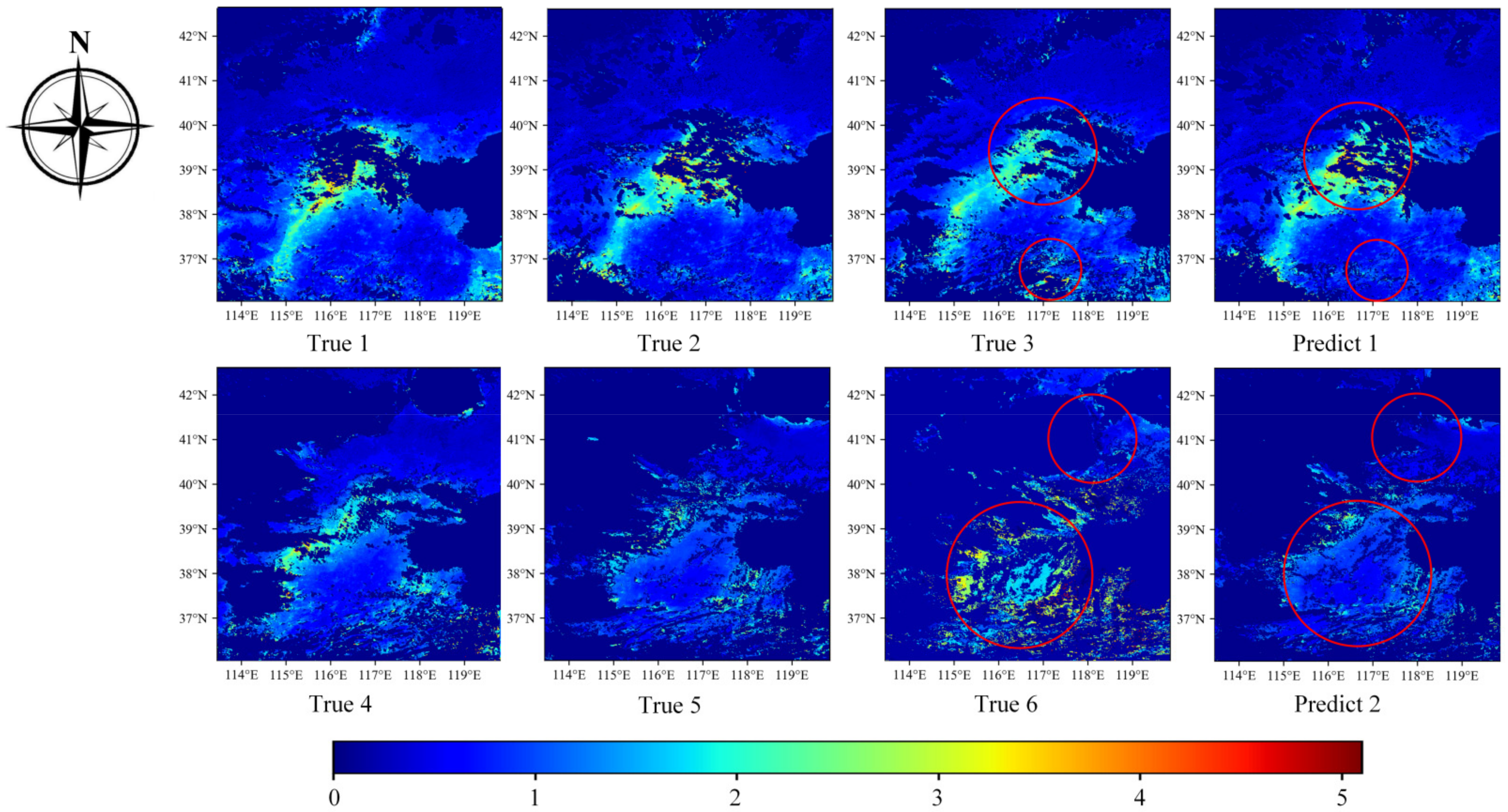



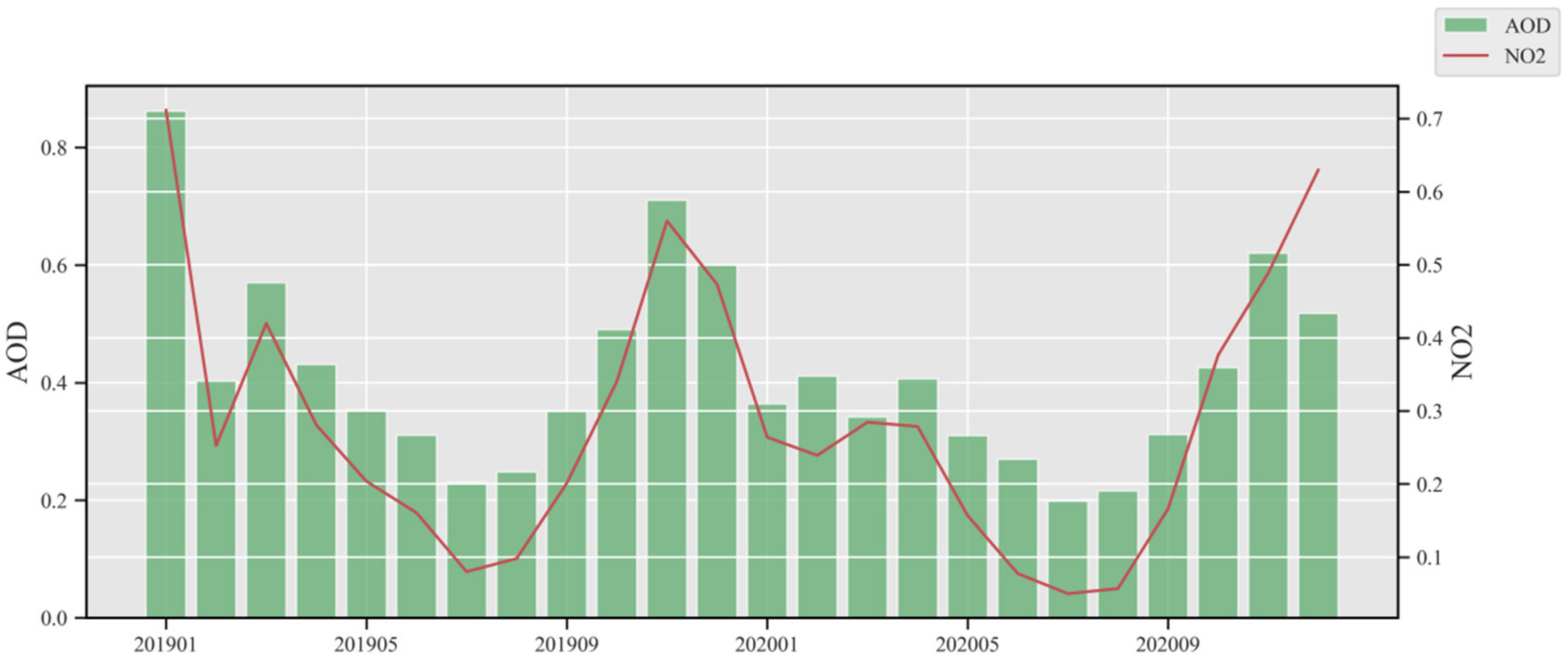
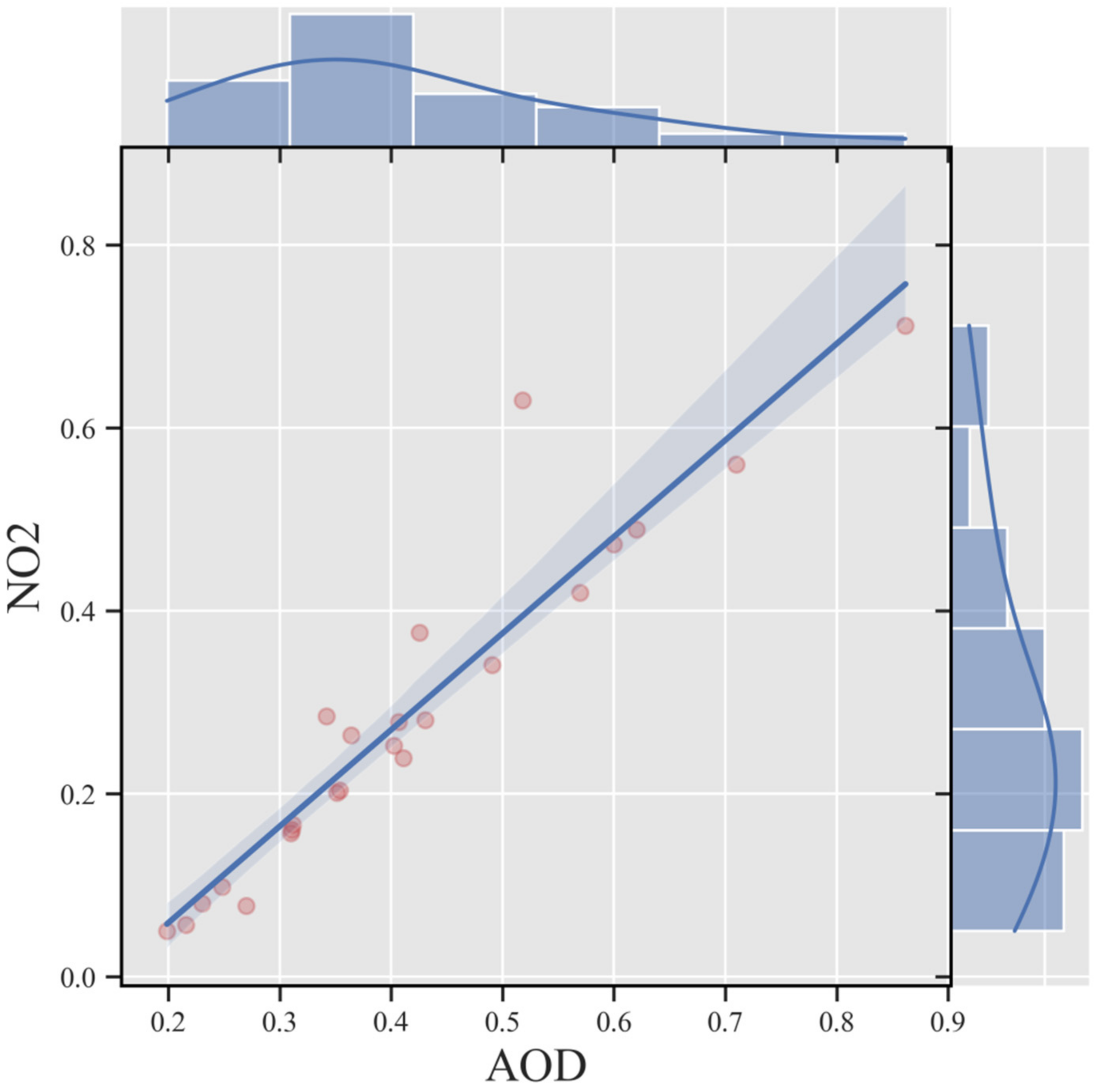
| Spectral Range | Channel (Center Wavelength (μm)) | Resolution (km) |
|---|---|---|
| Visible bands | 1, 2 (0.46, 0.51) | 1 |
| 3 (0.64) | 0.5 | |
| Near-infrared | 4, 5 (0.86, 1.60) | 1 |
| 6 (2.30) | 2 | |
| Infrared | 7–16 (3.90, 6.20, 7.00, 7.30, 8.60, 9.60, 10.40, 11.20, 12.30, 13.30) | 2 |
| Air Pollutant | Normal | Lockdown | Recovering 1 | Recovering 2 |
|---|---|---|---|---|
| AOD (mean) | −13.55% | −71.49% | −1.33% | −14.01% |
| NO2 (mean) | −50.32% | −29.35% | −20.50% | −1.16% |
| AOD (std) | 1.77% | 12.39% | 4.28% | −16.80% |
| NO2 (std) | −58.47% | −30.52% | −25.67% | 3.38% |
Publisher’s Note: MDPI stays neutral with regard to jurisdictional claims in published maps and institutional affiliations. |
© 2022 by the authors. Licensee MDPI, Basel, Switzerland. This article is an open access article distributed under the terms and conditions of the Creative Commons Attribution (CC BY) license (https://creativecommons.org/licenses/by/4.0/).
Share and Cite
Yao, J.; Zhai, H.; Yang, X.; Wen, Z.; Wu, S.; Zhu, H.; Tang, X. Spatiotemporal Variations of Aerosols in China during the COVID-19 Pandemic Lockdown. Remote Sens. 2022, 14, 696. https://doi.org/10.3390/rs14030696
Yao J, Zhai H, Yang X, Wen Z, Wu S, Zhu H, Tang X. Spatiotemporal Variations of Aerosols in China during the COVID-19 Pandemic Lockdown. Remote Sensing. 2022; 14(3):696. https://doi.org/10.3390/rs14030696
Chicago/Turabian StyleYao, Jiaqi, Haoran Zhai, Xiaomeng Yang, Zhen Wen, Shuqi Wu, Hong Zhu, and Xinming Tang. 2022. "Spatiotemporal Variations of Aerosols in China during the COVID-19 Pandemic Lockdown" Remote Sensing 14, no. 3: 696. https://doi.org/10.3390/rs14030696
APA StyleYao, J., Zhai, H., Yang, X., Wen, Z., Wu, S., Zhu, H., & Tang, X. (2022). Spatiotemporal Variations of Aerosols in China during the COVID-19 Pandemic Lockdown. Remote Sensing, 14(3), 696. https://doi.org/10.3390/rs14030696








